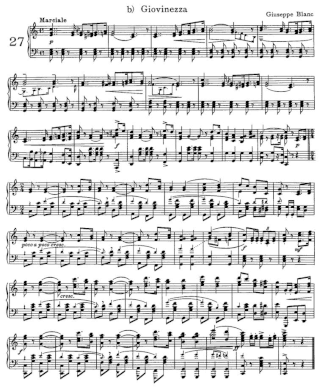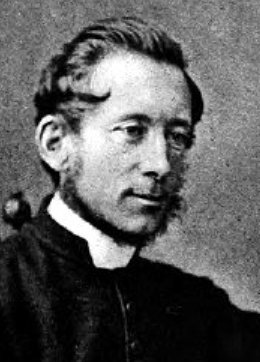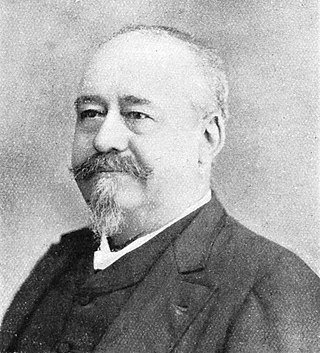William Henry Gill | |
|---|---|
 | |
| Born | 24 October 1839 |
| Died | 27 June 1923 (aged 83) |
William Henry Gill (24 October 1839 - 27 June 1923) was a Manx musical scholar who wrote and composed the anthem of Isle of Man, "Arrane Ashoonagh Dy Vannin". [2]
William Henry Gill | |
|---|---|
 | |
| Born | 24 October 1839 |
| Died | 27 June 1923 (aged 83) |
William Henry Gill (24 October 1839 - 27 June 1923) was a Manx musical scholar who wrote and composed the anthem of Isle of Man, "Arrane Ashoonagh Dy Vannin". [2]
Gill was born at Marsala, Sicily to Manx parents, and he was educated at King William's College. [3] He lived in London, England most of his life but remained interested in his roots. The anthem is a traditional Manx ballad. Gill's words were published as "Eaisht oo as Clash-tyn" ("Listen and Hear") in Manx National Songs in 1896. "The Manx Fisherman's Evening Hymn" and "Peel Castle." [4] Gill also collected and arranged material in England, particularly that associated with Sussex. [1]
Gill also published A Manx Wedding and Other Songs. [5]

"And did those feet in ancient time" is a poem by William Blake from the preface to his epic Milton: A Poem in Two Books, one of a collection of writings known as the Prophetic Books. The date of 1804 on the title page is probably when the plates were begun, but the poem was printed c. 1808. Today it is best known as the hymn "Jerusalem", with music written by Sir Hubert Parry in 1916. The famous orchestration was written by Sir Edward Elgar. It is not to be confused with another poem, much longer and larger in scope and also by Blake, called Jerusalem The Emanation of the Giant Albion.

"God Save the King" is the national anthem of the United Kingdom and the royal anthem of each of the British Crown Dependencies, one of two national anthems of New Zealand, and the royal anthem of most Commonwealth realms. The author of the tune is unknown and it may originate in plainchant, but an attribution to the composer John Bull has sometimes been made.

William Boyce was an English composer and organist. Like Beethoven later on, he became deaf but continued to compose. He knew Handel, Arne, Gluck, Bach, Abel, and a very young Mozart, all of whom respected his work.
This article contains information about the literary events and publications of 1772.

William Billings is regarded as the first American choral composer and leading member of the First New England School.

Orlando Gibbons was an English composer and keyboard player who was one of the last masters of the English Virginalist School and English Madrigal School. The best known member of a musical family dynasty, by the 1610s he was the leading composer and organist in England, with a career cut short by his sudden death in 1625. As a result, Gibbons's oeuvre was not as large as that of his contemporaries, like the elder William Byrd, but he made considerable contributions to many genres of his time. He is often seen as a transitional figure from the Renaissance to the Baroque periods.

John Bull was an English composer, organist, virginalist and organ builder. He was a renowned keyboard performer of the virginalist school and most of his compositions were written for this medium.

Anglican church music is music that is written for Christian worship in Anglican religious services, forming part of the liturgy. It mostly consists of pieces written to be sung by a church choir, which may sing a cappella or accompanied by an organ.

"Christ the Lord Is Risen Today" is a Christian hymn associated with Easter. Most of the stanzas were written by Charles Wesley, and the hymn appeared under the title "Hymn for Easter Day" in Hymns and Sacred Poems by Charles and John Wesley in 1739. The hymn eventually became well known for the "Alleluia" sung as a melisma after each line, which was added by an unknown author, probably to fit the commonly used hymn tune, "Easter Hymn". It remains a traditional processional hymn on Easter Sunday.

"Giovinezza" was the official hymn of the Italian National Fascist Party, regime, and army, and was an unofficial national anthem of the Kingdom of Italy between 1924 and 1943. Although often sung with the Royal March, the official anthem, some sources consider "Giovinezza" to have supplanted it as the de facto national anthem of the country, to the dismay of Victor Emmanuel III—a powerful symbol of the diarchy between the King and Mussolini. It was subsequently the official anthem of the Italian Social Republic.

Thomas Tertius Noble was an English-born organist and composer, who lived in the United States for the latter part of his career.

John Bacchus Dykes was an English clergyman and hymnwriter.

"Nearer, My God, to Thee" is a 19th-century Christian hymn by Sarah Flower Adams, which retells the story of Jacob's dream. Genesis 28:11–12 can be translated as follows: "So he came to a certain place and stayed there all night because the sun had set. And he took one of the stones of that place and put it at his head, and he lay down in that place to sleep. Then he dreamed, and behold, a ladder was set up on the earth, and its top reached to heaven; and there the angels of God were ascending and descending on it..."

Hymns Ancient and Modern is a hymnal in common use within the Church of England, a result of the efforts of the Oxford Movement. The hymnal was first published in 1861. The organization publishing it has now been formed into a charitable trust, Hymns Ancient and Modern Ltd, and as of 2022 it publishes a wide range of hymnals as well as other theological and religious books and magazines, under imprints such as the Canterbury Press and SCM Press.
William Selby (1738–1798) was an English organist, harpsichordist, choirmaster and composer who emigrated to America.
"As with Gladness Men of Old" is an Epiphany hymn, written by William Chatterton Dix on 6 January 1859 (Epiphany) while he was ill in bed. Though considered by many as a Christmas carol, it is found in the Epiphany section of many hymnals and still used by many churches. The music was adapted by William Henry Monk in 1861 from a tune written by Conrad Kocher in 1838. The hymn is based on the visit of the Biblical magi in the Nativity of Jesus.
John Joseph Kneen was a Manx linguist and scholar renowned for his seminal works on Manx grammar and on the place names and personal names of the Isle of Man. He is also a significant Manx dialect playwright and translator of Manx poetry. He is commonly best known for his translation of the Manx National Anthem into Manx.
William Turner was a composer and countertenor of the Baroque era. A contemporary of John Blow and Henry Purcell, he is best remembered for his verse anthems, of which over forty survive. As a singer, he was a Gentleman of the Chapel Royal from 1669 until his death.

John Robson Sweney was an American composer from Pennsylvania. He was a professor of music at the Pennsylvania Military Academy for twenty-five years and collaborated with William J. Kirkpatrick to produce and publish over 1,000 gospel hymn songs and over sixty hymnal books. His most popular and widely known hymn is "Beulah Land".

I Will Mention the Loving-kindnesses is an anthem for Easter by Arthur Sullivan. The text is taken from the Book of Isaiah, scored for solo tenor, mixed choir and organ. It was published by Novello in 1875, dedicated to John Stainer.